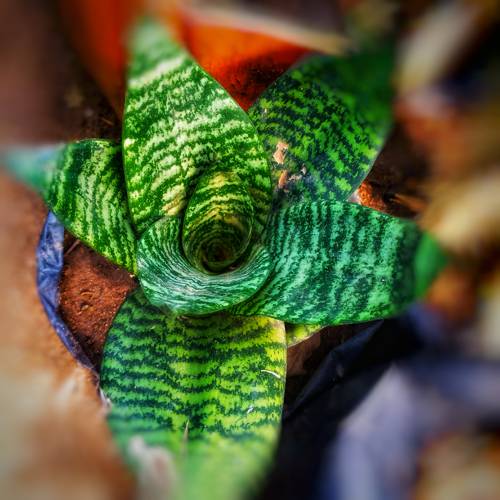
FAQ About Air-Purifying Indoor Plants

What are some common air-purifying indoor plants?
Some common air-purifying indoor plants include the Snake Plant (Sansevieria), Spider Plant (Chlorophytum comosum), Peace Lily (Spathiphyllum), Aloe Vera, and English Ivy (Hedera helix). Each of these plants is renowned for its ability to filter out pollutants such as formaldehyde, benzene, and xylene from indoor environments.

How do indoor plants purify the air?
Indoor plants purify the air through a process called phytoremediation. They absorb pollutants through their leaves and roots, breaking down harmful chemicals. Microorganisms associated with the plants and soil play a crucial role in degrading toxins, effectively improving air quality.

What are the benefits of having air-purifying plants indoors?
Air-purifying plants offer numerous benefits, including enhancing air quality by removing toxins, increasing humidity, reducing stress, and boosting mood. They can also improve concentration and performance, making them excellent additions to home and office environments.

What types of pollutants can air-purifying plants remove?
Air-purifying plants can remove various indoor pollutants such as formaldehyde, benzene, carbon monoxide, xylene, and trichloroethylene. These chemicals are commonly found in household products, building materials, and tobacco smoke.

Do air-purifying plants require special care?
While most air-purifying plants are relatively low-maintenance, their care requirements can vary. Generally, they need appropriate light, consistent watering, and well-drained soil. It's essential to research each plant's specific needs for optimal growth and air-purifying effectiveness.

Can air-purifying plants effectively replace air purifiers?
While air-purifying plants can help improve indoor air quality, they are not as effective as electronic air purifiers. Plants can complement air purification efforts but may not remove pollutants as efficiently or quickly as a mechanical purifier.

How many air-purifying plants are needed to improve indoor air quality?
Research suggests that having at least one air-purifying plant per 100 square feet can help improve indoor air quality. However, the effectiveness also depends on factors such as the size and type of plant, the level of pollutants, and the ventilation in the space.

Are there air-purifying plants suitable for low-light conditions?
Yes, several air-purifying plants thrive in low-light conditions. These include the Snake Plant (Sansevieria), Peace Lily (Spathiphyllum), and Pothos (Epipremnum aureum). These plants are ideal for areas with limited natural light.

Do air-purifying plants also increase oxygen levels indoors?
Yes, air-purifying plants contribute to increasing indoor oxygen levels. Through photosynthesis, they absorb carbon dioxide and release oxygen, enhancing air quality and creating a more oxygen-rich environment.

How can I integrate air-purifying plants into my home decor?
Integrating air-purifying plants into home decor can be achieved by placing them in aesthetically pleasing planters, positioning them strategically in living spaces, or using plant stands and shelves. Consider plant colors and textures to complement your interior design.

Can air-purifying plants help people with allergies?
While air-purifying plants can improve air quality by removing certain toxins, they may not directly alleviate allergies. Some people might also be allergic to the pollen or mold that can grow in plant soil. It's advisable to choose hypoallergenic plant varieties and maintain proper care to minimize allergens.

What is the best soil mixture for air-purifying indoor plants?
A well-draining soil mixture is best for air-purifying indoor plants. A blend of high-quality potting soil with added perlite or sand can improve drainage and aeration, supporting healthy root systems.

Are there any air-purifying plants that are safe for pets?
Yes, some air-purifying plants are non-toxic and safe for pets, including the Spider Plant (Chlorophytum comosum), Boston Fern (Nephrolepis exaltata), and Areca Palm (Dypsis lutescens). However, always check specific plant safety, as many air-purifying plants can be harmful to pets.

How often should I water air-purifying indoor plants?
The watering frequency for air-purifying indoor plants depends on the species and environmental conditions such as humidity and light. Generally, it’s best to water when the top inch of the soil feels dry. Overwatering should be avoided to prevent root rot.

Can I use artificial light for air-purifying plants indoors?
Yes, air-purifying plants can thrive under artificial light. LED grow lights or fluorescent bulbs specifically designed for plant growth can help mimic natural sunlight, allowing plants to photosynthesize and maintain health indoors.

What are some easy-to-care-for air-purifying plants for beginners?
For beginners, some easy-to-care-for air-purifying plants include the Spider Plant (Chlorophytum comosum), Snake Plant (Sansevieria), and Pothos (Epipremnum aureum). These plants tolerate varying conditions and require minimal care.

Do air-purifying plants affect humidity levels?
Yes, air-purifying plants can increase indoor humidity levels. Through a process called transpiration, they release moisture into the air, which helps increase humidity. This effect can be beneficial in dry indoor environments.

What sizes do air-purifying plants come in?
Air-purifying plants come in a range of sizes, from small potted varieties suitable for desktops and shelves to large floor plants like the Rubber Tree (Ficus elastica) or the Areca Palm (Dypsis lutescens), which can reach impressive heights.

Can air-purifying plants help reduce stress and improve mood?
Yes, having air-purifying plants indoors can help reduce stress and improve mood. Studies have shown that being near greenery and interacting with plants can promote a sense of calm, lower anxiety, and enhance overall well-being.

What are some tips for maintaining the health of air-purifying plants?
To maintain the health of air-purifying plants, ensure they are placed in appropriate light conditions, water them correctly, use well-draining soil, and fertilize periodically with a balanced houseplant fertilizer. Regularly cleaning the leaves and checking for pests can also help maintain plant health.
